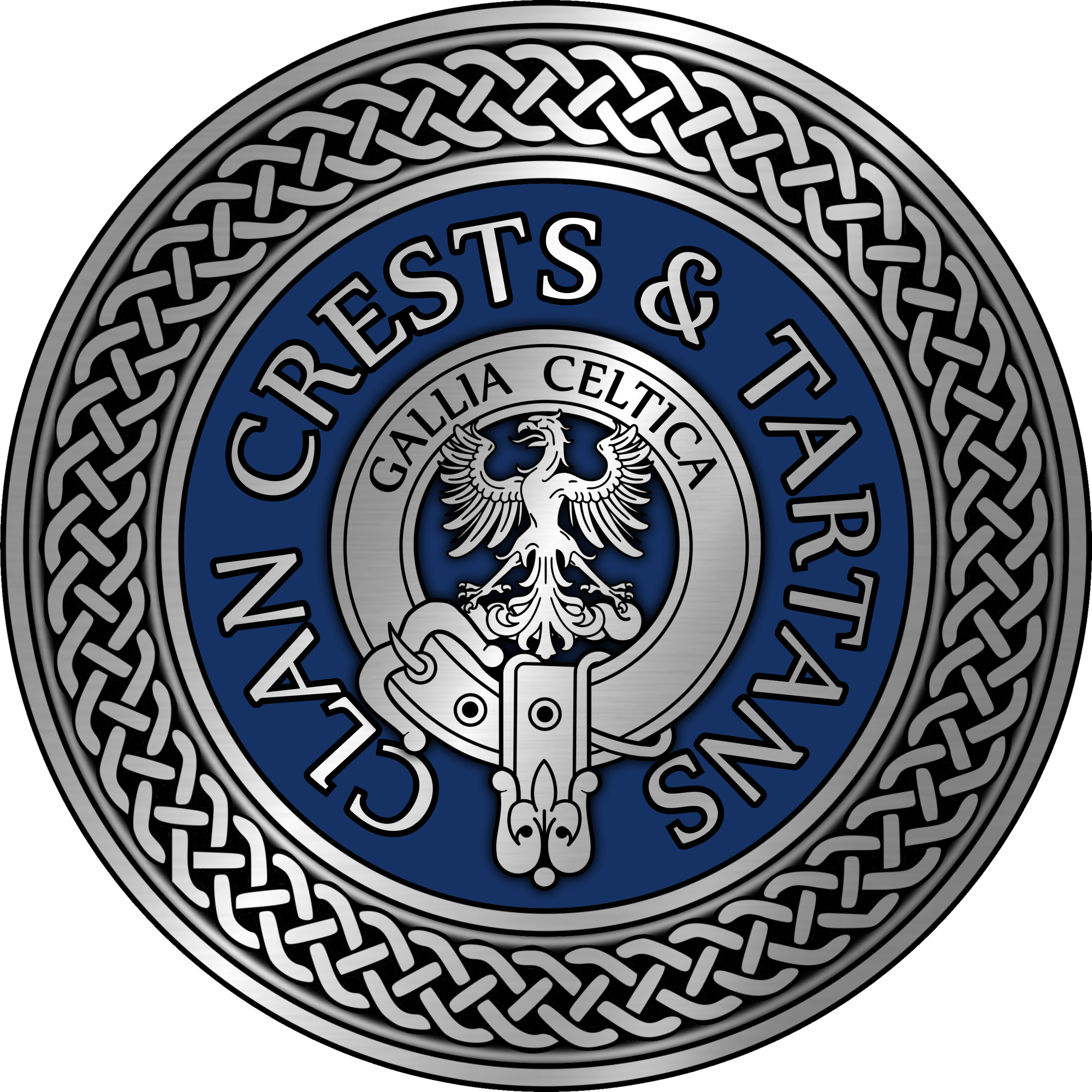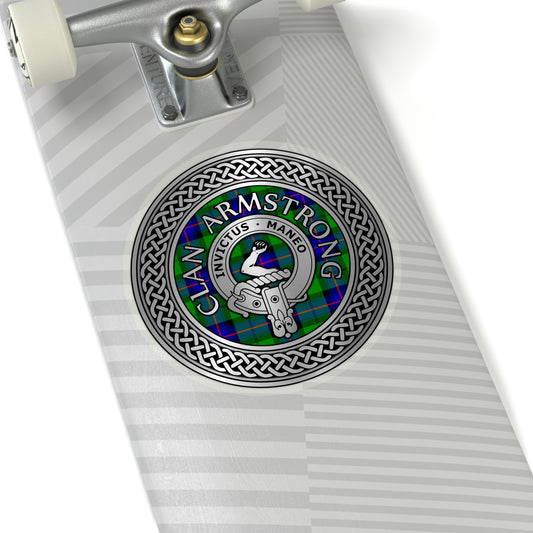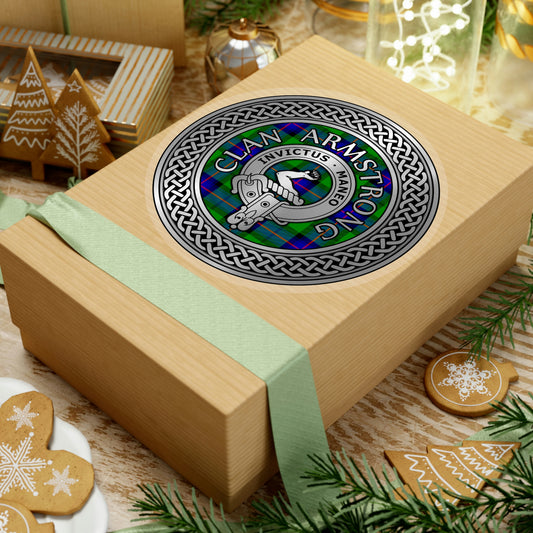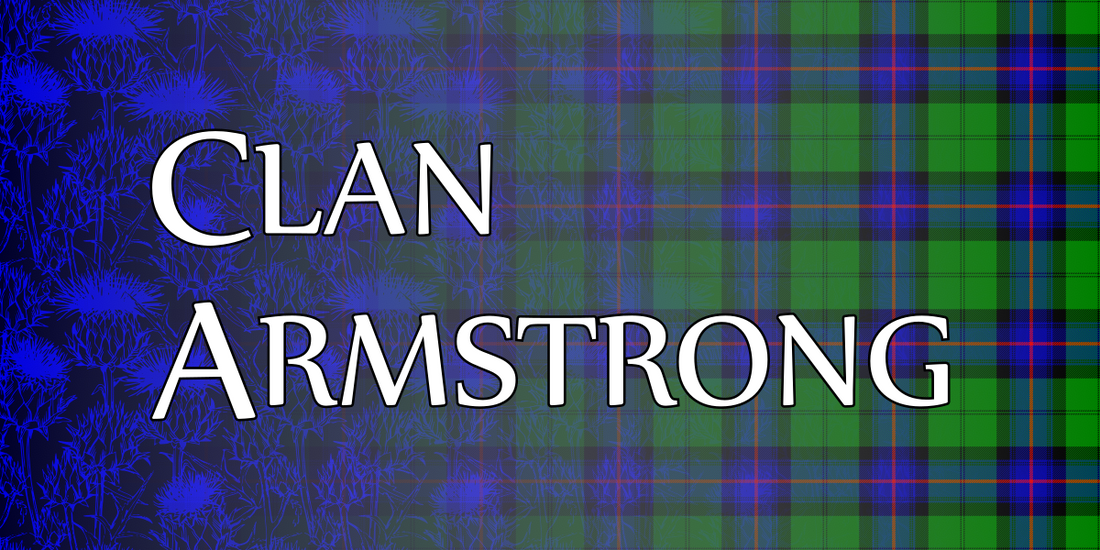

Scots Gaelic: Clann Mac Ghillielàidir
Clan Armstrong is a Scottish clan of the Scottish Borders. The clan does not currently have a chief recognised by the Lord Lyon King of Arms and therefore it is considered an Armigerous clan.
Profile
Crest: An arm from the shoulder, armed, Proper
Motto: Invictus maneo (I remain unvanquished)
Region: Scottish Borders
District: Liddesdale
Historic Seat: Mangerton
Last Chief: Archibald Armstrong of Mangerton, died 1610.
Clan Relationships
Branches
Armstrong of Mangerton
Allied Clans
Elliot, Moffat, Crozier, Nixon
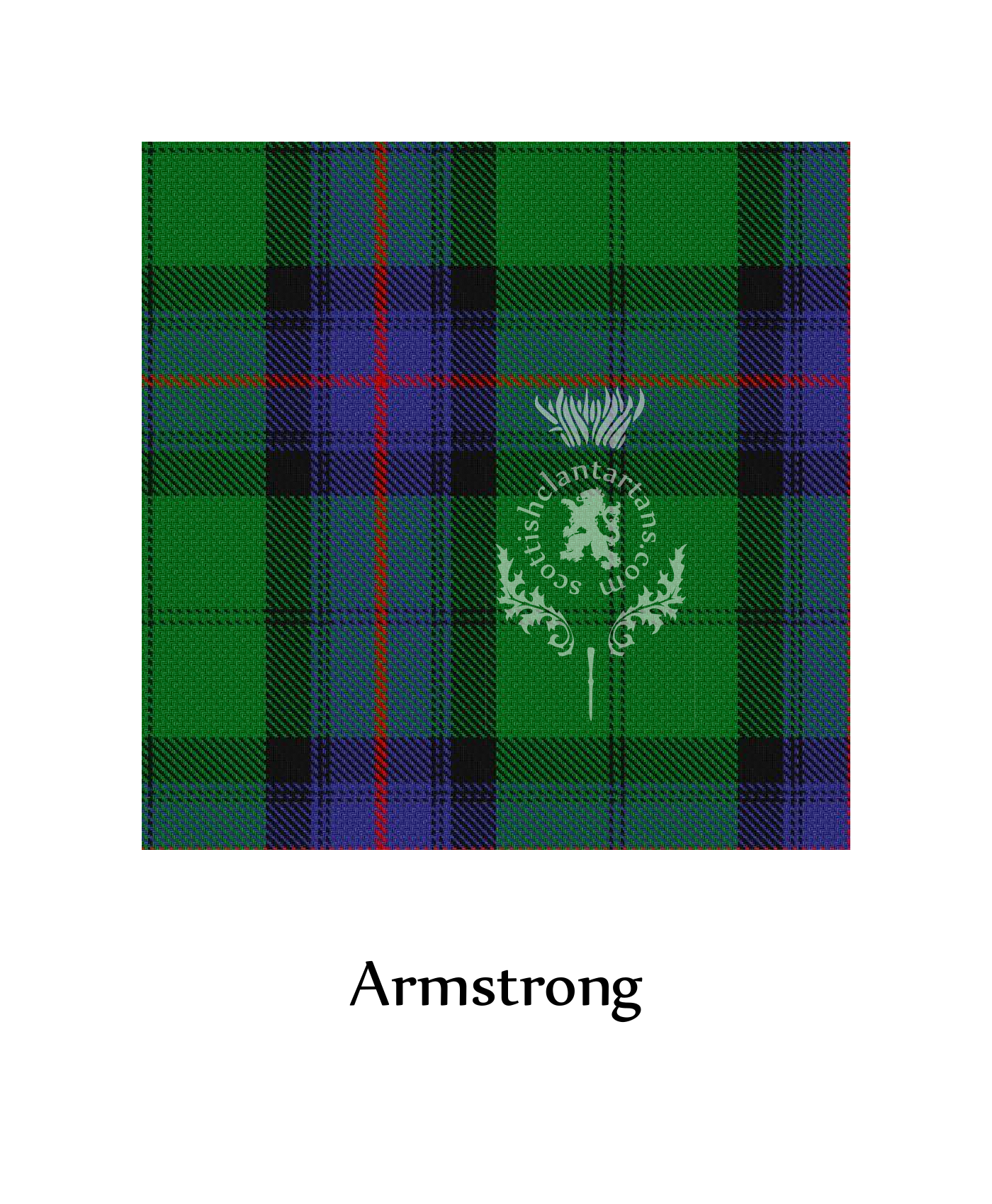
Clan Tartan
Shop Armstrong TartansClan History
According to the legend and tradition, the first of the name Armstrong was Siward Beorn (sword warrior), who was also known as Siward Digry (sword strong arm). He was said to be the last Anglo-Danish Earl of Northumberland and a nephew of King Canute, the Danish king of England who reigned until 1035.
The Armstrong name was common over the whole of Northumbria and the Scottish Borders. The Armstrongs became a powerful and warlike clan in Liddesdale and the Debatable Lands. Historian George Fraser Black lists Adam Armstrong in 1235 as being pardoned for causing the death of another man. By tradition, the Armstrongs followed the cause of Robert the Bruce in the Scottish Wars of Independence, and their recorded relationship with the crown was certainly more straightforwardly loyal in the fourteenth century than in later periods. Alexander Armstrong, second laird of Mangerton was imprisoned and killed by the anti-Bruce conspirator William de Soulis at Hermitage Castle. Gilbert Armstrong, served as steward of the household of David II of Scotland, Master of the Horse to the king, and ambassador to England in 1363. Sir Adam Armstrong was listed in 1374 as one of the knights permitted to travel outside Scotland with the Earl of March and Dunbar, then the principal defender of the Scottish border. Fourteen years later, John Armstrong fought in the army of James, second Earl Douglas at the Battle of Otterburn. In 1398, Alexander, David and Geoffrey Armstrong committed their signatures as 'borowis' for the third Earl of Douglas in pledging to keep the peace on the border.
15th, 16th and 17th Centuries
In around 1425 John Armstrong, brother of Armstrong of Mangerton in Liddesdale built a strong tower. The Armstrongs were able to raise three thousand horsemen and were said to be at one point in control of the debatable lands. In 1528, Lord Dacre, who was the English Warden of the Marches, attacked the Armstrongs' tower but the Armstrongs retaliated and burned Netherby. The power of the Armstrongs was seen by James V of Scotland as a threat to his own authority. According to tradition, James tricked John Armstrong of Gilnockie to a meeting at Hawick where the king hanged the Armstrong laird without further ado. King James continued his treatment of the Armstrongs when they failed to support him in 1542 at the Battle of Solway Moss.
In 1603 the Union of the Crowns brought an official end to the Anglo-Scottish Wars of the Borders. In 1610 the last of the Armstrong lairds was hanged in Edinburgh for leading a raid on Penrith, England. This was followed by a ruthless campaign by the Crown to pacify the Borders. As a result, families were scattered with many of them seeking new homes in Ulster, particularly in County Fermanagh. Armstrong is now amongst the fifty most common names in Ulster. There has been no trace of the Armstrong chiefs since the clan was dispersed in the 17th century. Curiously, despite their tense relationship with the Stewart crown, a number of Armstrongs are recorded as officers in the royalist armies serving Charles I in the Wars of the Three Kingdoms. "Robert Armstrong, Gent, one of His Maties Servants," was buried at St. Olave, York," among a number of royalist casualties. The professional soldier Sir Thomas Armstrong settled in Ireland in 1639, was elected to the Dublin parliament and fought for the crown in the armies of the Earl of Ormonde and the Earl of Inchiquin. He and his sons Thomas and William engaged actively in royalist conspiracies against the Cromwellian Protectorate through the following decade. William ("Christie's Will") Armstrong, perhaps the last of the clan's famous border freebooters, also fought for the crown as a servant of the earl of Traquair.
Modern Clan History
Amongst the many distinguished Armstrongs are Sir Alexander Armstrong who was an Arctic explorer, and Neil Armstrong who was the first man to walk upon the Moon, taking with him a piece of the Clan Armstrong tartan. The Armstrong Baronets are descendants of Gilnockie. Comedian Alexander Armstrong is a descendant. Edwin Howard Armstrong, the inventor of FM Radio, is also a descendant. Although there has been no trace of the Armstrong chiefs since the clan was dispersed in the 17th century, there is a powerful and active clan association and the Clan Armstrong Trust was established in 1978.
Armstrong Collection
-
Clan Armstrong Crest & Tartan Kiss-Cut Stickers
Regular price From $5.00 NZDRegular priceUnit price per -
Clan Armstrong Tartan Socks
Regular price $27.00 NZDRegular priceUnit price per -
Clan Armstrong Ancient Tartan Suit vest jacket
Regular price $88.00 NZDRegular priceUnit price per -
Clan Armstrong Ancient Tartan Suit vest jacket
Regular price $88.00 NZDRegular priceUnit price per
